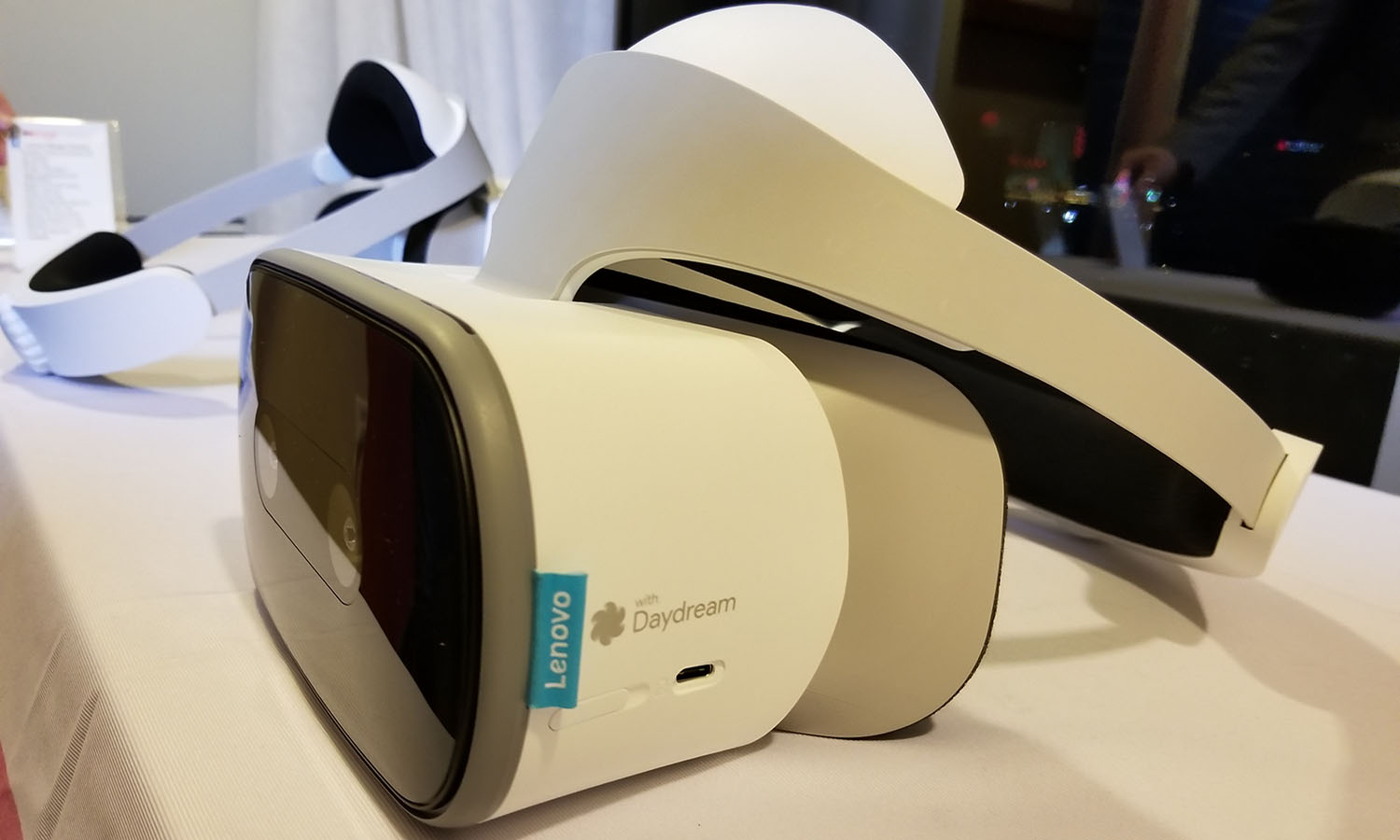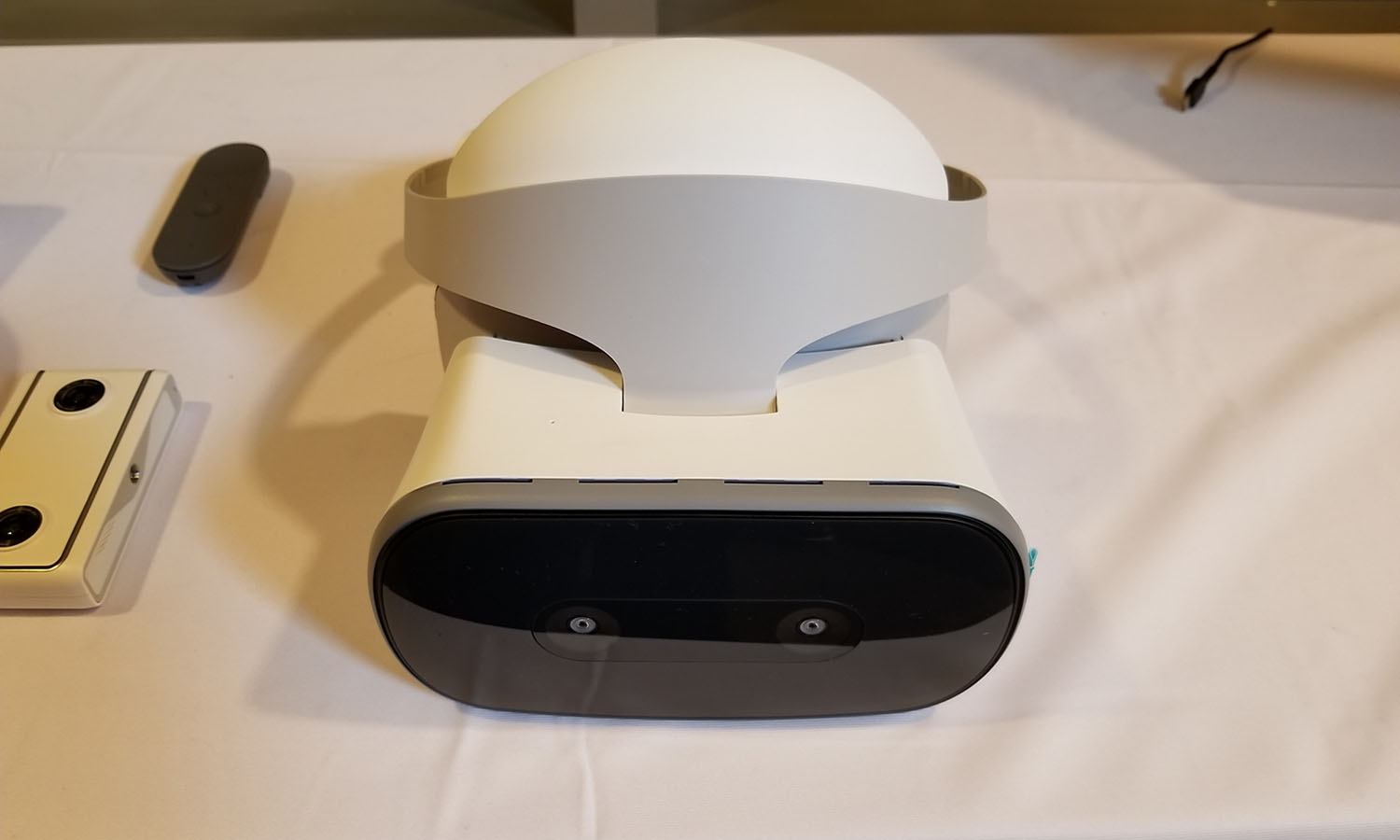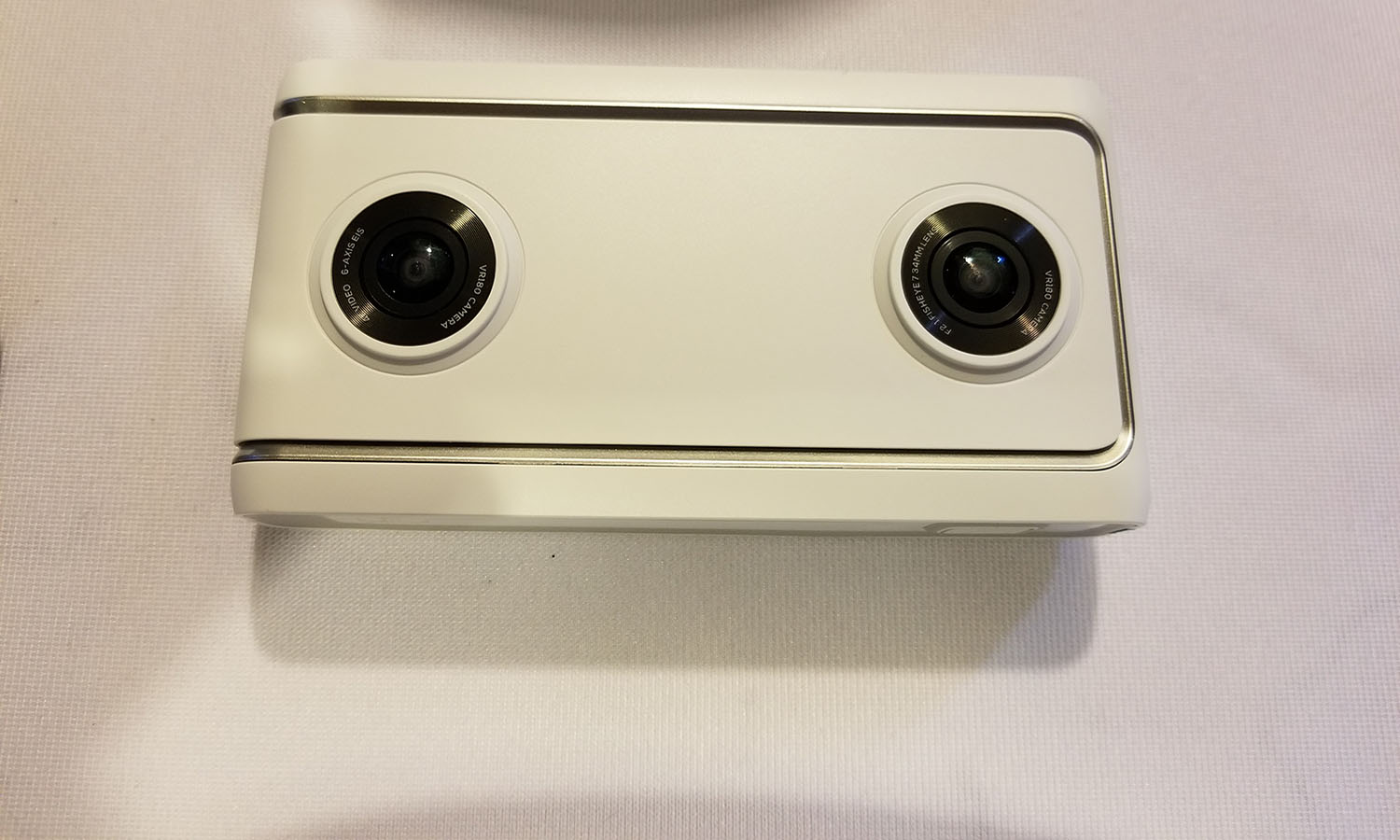Lenovo's Mirage Solo VR Headset Ditches Phones and Cords
The future of VR lies in self-contained systems and Lenovo's leading the charge.
LAS VEGAS - Virtual reality's second act has arrived, and it appears the future lies in self-contained systems. It's Lenovo, not Oculus VR or HTC that's leading the charge.
The company recently unveiled its Mirage Solo headset, the first all-in-one, Google Daydream-compatible VR headset. The device is scheduled to debut during the second quarter of the year, with a target price below $400.

However, Lenovo isn't stopping at the headset. The company also announced the Mirage Camera (Q2 launch, sub-$300 target price), which can capture VR content.
Design
Despite its gleaming Moonlight White plastic body, the Mirage Solo has a similar design to the Lenovo Mixed Reality headset I saw last year. Along the back, you have the large knob, which allows you to adjust the diameter of the headband. If you have big hair like me, be prepared to do some strategic coif maneuvering even on the widest setting.
MORE: Best VR Headsets
The front of the device is made from glossy black plastic from which you can see a pair of Google's WorldSense tracking sensors, which afford the wearer six degrees of motion with a 1.5-meter play area to move around in. They do not, however, act as a set of pass-through lenses, which means you can't look out into the real world.
Putting it on, I found that the headset was comfortably balanced, with the majority of the weight resting towards the front of the device. Although there's a hinge-looking attachment connecting the front part of the Mirage Solo to the headband, it does not have the ability to flip upwards like its mixed-reality counterpart. However, unlike any other headset on the market, the Mirage has a slot for a microSD card, which is intriguing to say the least.
It's What's On the Inside That Counts
Look ma, no phone or wires! The Mirage Solo is powered by a Qualcomm Snapdragon 835 processor with 4GB of RAM and 64GB of onboard storage. It's the same CPU that's found in most current flagship Android smartphones. That means you can expect smooth rendering when exploring your virtual vistas with minimal lag.

Speaking of your smartphone, Lenovo claims that the Mirage Solo can last up to 7 hours on a charge, thanks to its 4,000 mAh battery. That's a shorter battery life than most high-end phones, but that means that you can spare your precious handheld the rigors of supporting VR, namely extreme heat and quick battery drainage.
Like the Google Daydream View, the Mirage Solo will run on the Daydream OS, which means you'll be using the Daydream View's controller to help you navigate through worlds. The controls are the same for both headsets, so those familiar with the Daydream View will have no problems with the Mirage Solo.
MORE: 9 Cheap VR Headsets (Under $45) Ranked from Best to Worst
Eyes-on
The Mirage Solo is equipped with a QHD display (2560 x 1440), which rivals a Samsung Gear VR outfitted with a Samsung Galaxy S8+ (2960 x 1440). Both headsets top the Oculus Rift and HTC Vive, which have resolutions of 1080 x 1200. That meant when I was watching a video of a child's birthday party, details were sharp enough that I could see little wisps of hair framing the birthday girl's face as she blew out her candles. The color was nice and vivid, especially the light blue balloon that one party guest swatted into my face.
However, without having any of the competitors on hand, I'm not going to make any final judgement. I will say that I'm pleasantly surprised by my initial viewing. I'm also happy to learn that you can cast the content you're experiencing in the Mirage Solo to a compatible television so everyone can get in on the fun.
Mirage Camera
While Google is busy building up its VR library in the Daydream Store, Lenovo wants to give consumers the power to make their own VR movies with the Mirage Camera. On the surface, the shooter looks like some futuristic, yet kitschy point and shoot. The white plastic housing shows off the pair of front-mounted dual 13-megapixel lenses. The two lenses are able to capture stereoscopic images as well as 4K at 30 frames per second. In addition to stills, the shooter has a video mode as well as live broadcasting option.

And just like a regular point and shoot, the Mirage camera deals in simplicity -- so much so that the camera doesn't have a rear viewfinder. That's because the shooter captures everything you see in front of you up to 180 degrees. Just point, shoot and voila! You've got a beautiful photo or video that can be viewed in VR on the Mirage Solo, thanks to the integrated Wi-Fi on both devices. However, with a target price somewhere below $300, there's the potential that the camera could be more expensive than the Samsung Gear VR 360, which is currently priced at $157.99.
MORE: Best 360-Degree Cameras
Final Thoughts
The Lenovo Mirage Solo has potential. You get a VR headset that doesn't rely on a high-end smartphone as the top mobile brands do, and isn't rooted in place by wires as the PC-powered options are. For all intents and purposes, this all-in-one solution offers the best of both worlds, with none of the downsides. I'm particularly hopeful about the battery life, and am excited about expanding the onboard memory via a microSD card. The Mirage Camera is a nice, albeit expensive, peripheral that can add a lot more milage to the headset.
However, I'm not sure if consumers will be ready to plunk down upwards of $400 for the headset, especially now that the Rift is priced at $399 complete with Touch controllers and sensors. The battle will lie in the marketing and convincing consumers that the Mirage Solo offers comparable quality to the competition without the various smartphones and tethers. But I'll reserve final judgment for when I get my hands on a review unit.
Sign up to get the BEST of Tom's Guide direct to your inbox.
Get instant access to breaking news, the hottest reviews, great deals and helpful tips.
Sherri L. Smith has been cranking out product reviews for Laptopmag.com since 2011. In that time, she's reviewed more than her share of laptops, tablets, smartphones and everything in between. The resident gamer and audio junkie, Sherri was previously a managing editor for Black Web 2.0 and contributed to BET.Com and Popgadget.

